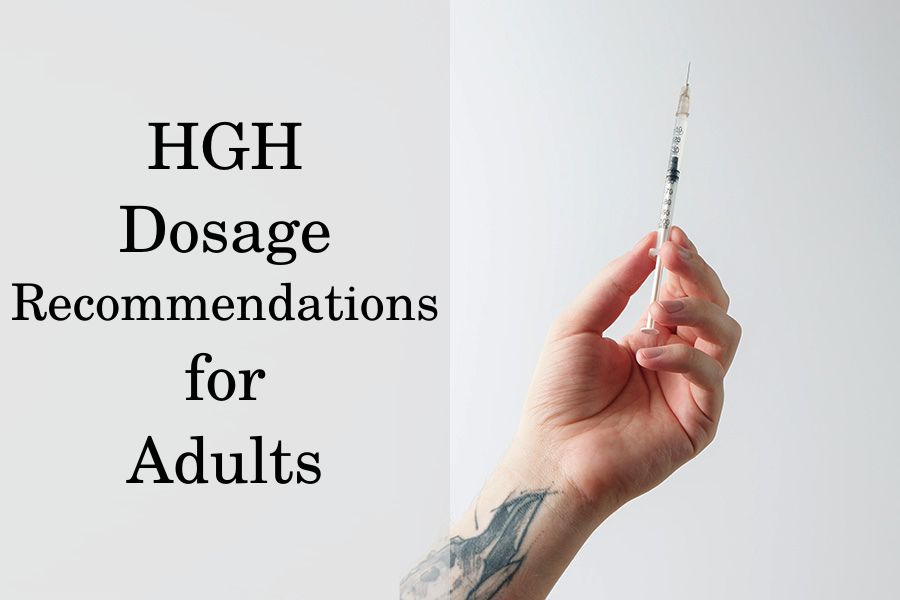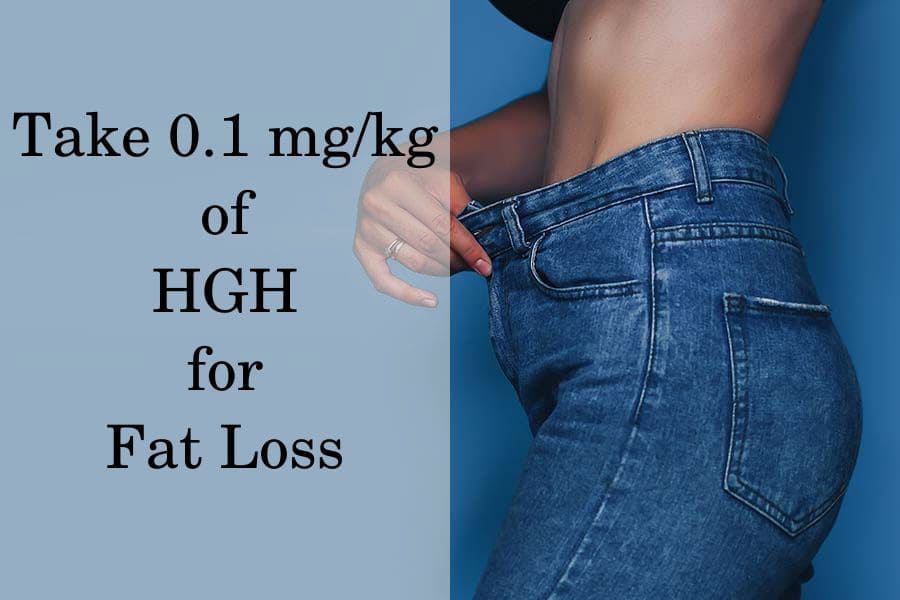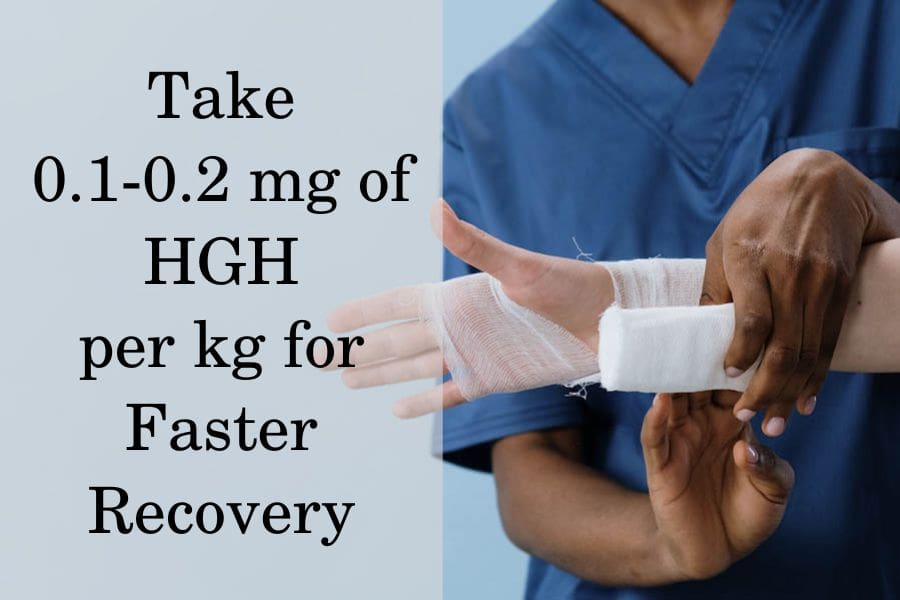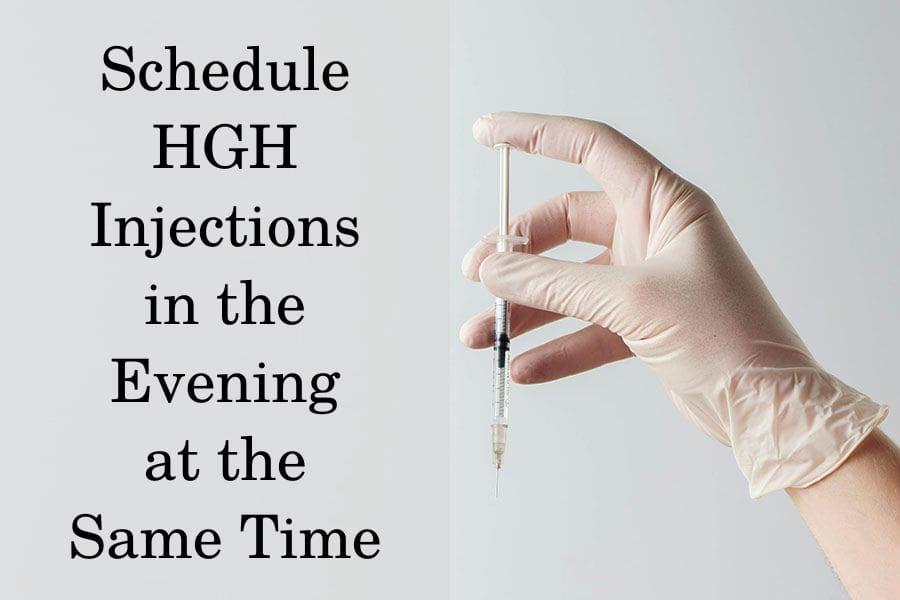When it comes to human growth hormone (HGH) therapy, there are many important things to consider, such as the right dosage for you.
The optimal dose will depend on your medical indications for growth hormone therapy, your gender, age and whether you have other accompanying conditions or not.
You may receive HGH injections to manage growth hormone deficiency (GHD) or other health problems such as muscle wasting or short-bowel syndrome (SBS). Each of those indications requires a specific dosage to get the maximum from your HGH therapy.
Keep in mind that HGH is a controlled substance, and the medication is available only with a prescription. As with any other prescription medication, HGH therapy must be dosed properly in order to be both safe and effective.
An experienced medical doctor will carefully evaluate your case and prescribe you an appropriate HGH dose based on the latest scientific guidelines as well as your individual characteristics.
Therefore, make sure to follow instructions and HGH dosage prescribed by an endocrinologist instead of seeking advice from unofficial online resources. Taking the wrong dosage of HGH can result in either an increased risk of adverse reactions or insufficient improvement and lack of symptom relief.
How much HGH should you take?
Your doctor can estimate the optimal dosage for you by using one of the two main methods, which are called weight-based and non-weight-based methods.
Official guidelines recommend using the non-weight-based approach as the method of choice for adults because it minimizes the risk of side effects.
It involves a standard starting daily dose of 0.2 mg (equal to 0.6 IU/day), which your physician can increase by 0.1-0.2 mg every 4-8 weeks, depending on your individual response to the therapy.
In contrast, the weight-based method is calculated per kilogram of the patient’s body weight.
The weight-based approach was initially developed for use in children, and clinical trials have revealed that it increases the risk of overdosing and side effects in adults, especially those who are overweight or obese.
Non-weight-based method is widely accepted as more appropriate for adults
Research reveals that most patients manage their symptoms effectively in doses ranging from 0.4 to 0.8 mg/day. The factors which determine the optimal dose of HGH for you include your:
- age
- gender
- estrogen status in women
For example, estrogen counteracts some of the effects of growth hormone, such as its ability to stimulate IGF-1 synthesis. Therefore, women may need higher HGH doses to achieve the same IGF-1 response as men.
Furthermore, the risk of side effects of HGH therapy increases with age, so older individuals should take lower doses.
The safest dose for you is the one recommended by your healthcare professional. If they suspect that there may be a risk of side effects, the daily dose of HGH may also be decreased gradually by 0.1-0.2 mg per month until any adverse reactions disappear.
Different HGH brands have different dosing recommendations when based on the weight-based approach, which includes a maximum starting dose and maximum total daily dose.
The maximum daily starting dose for the Norditropin FlexPro is recommended at 0.004 mg per kg of body weight(kgBW), and it can be increased every six weeks up to a maximum of 0.016 mg.
On the other hand, the maximum daily starting dose for Genotropin is recommended at 0.006 mg/kgBW, and it can be increased every six weeks up to a maximum of 0.012 mg.
How much HGH should a man take?
Men can take lower doses of growth hormone than women while achieving similar or better effects from the therapy. That’s mainly due to the low levels of estrogen in men, which improve the sensitivity of the male body to the benefits of the growth hormone.
Official guidelines recommend that men in their 30s and above should take lower amounts than younger individuals
According to the Endocrine Society, men aged 30-60 years old should start their therapy with 0.2-0.3 mg/day and then increase their dosage by 0.1-0.2 mg every 4-8 weeks.
In comparison, younger men can start their therapy on 0.4-0.5 mg/day and increase it gradually in a similar fashion.
On the other hand, HGH dosage for men may have to be reduced after their 60s. That’s because scientists warn that older individuals are at higher risk of side effects.
Regardless of age, HGH therapy can improve all symptoms in men with GHD and lead to:
- increased lean mass
- higher energy levels
- reduced abdominal fat
- better quality of life
HGH therapy may even help hair growth in men with GHD. Studies report that growth hormone therapy can help increase hair growth in men when taken in doses of 2-5 IU per day.
Despite the fact that both growth hormone and the male sex hormone have anabolic effects, HGH injections cannot relieve symptoms caused by low testosterone, which can include:
- male infertility
- lack of sexual desire
- depression
How much HGH should a woman take?
Women of reproductive age suffering from GHD may need larger HGH doses than men due to the higher estrogen levels in the female body.
Studies show that estrogens stimulate a protein called the Suppressor of cytokine signaling 2 (SOCS2). The function of this protein is to regulate growth by suppressing IGF-1 production in the liver.
Women must take higher HGH doses to achieve the recommended levels of IGF-1 and its related benefits
Furthermore, women taking oral estrogens such as birth-control medications or estrogen replacement therapy may need even large dosages of HGH to make therapy effective.
That’s because oral estrogens are metabolized in the liver, where they directly suppress the effects of growth hormone on IGF-1 production.
In such cases, your doctor may consider switching you from oral to other forms of estrogen, such as transdermal gels.
Despite the negative effects of estrogen, HGH dosage for women should start at 0.2-0.3 mg/day, and your doctor will increase it by 0.1-0.2 mg every 1-2 months in accordance with the non-weight-based method.
The endocrinologist will adjust the HGH dosage for women gradually until all the symptoms of GHD disappear completely.
Dosage for weight loss
HGH therapy can help combat abdominal obesity in patients with growth hormone deficiency. The accumulation of abdominal and visceral fat is one of the hallmarks of the condition.
Studies in GHD patients report that daily doses of about 0.01 mg/kgBW induced almost 4% body fat loss in women and almost 6% body fat loss in men within the first six months.
Some studies also report that HGH injections may aid weight loss in obese adults with normal pituitary function
One trial in middle-aged men reported that doses of 0.0095 mg/kgBW given daily for nine months led to a 9% reduction in body fat and an 18% reduction in visceral fat.
However, HGH therapy is not approved for stimulating weight loss in non-GHD individuals, and very few studies have investigated its potential benefits in healthy participants.
Dosage for muscle gain
Due to its anabolic and muscle-sparing effects, GH injections are also approved for the management of muscle wasting and cachexia associated with HIV/AIDS.
HGH dosing used in such cases is much higher than the recommended for GHD, but the therapy lasts only several months.
Studies report that taking 0.1 mg/kgBW for three months is a safe and effective strategy for stimulating muscle growth in HIV patients. The participants experienced a 3 kg increase in lean body mass on average for the whole period.
Therefore the HGH dosage for sparing muscle mass in muscle wasting disorders can reach up to 15-20 IU per day, depending on your body weight.
HGH therapy has also been studied for stimulating muscle growth and reducing age-related loss of lean body mass in elderly individuals, even though the medication has never been approved for such indications.
According to the research, six months of therapy with 2 IU of HGH daily in 5 elderly led to a significant increase in their lean body mass by 6.7 kg on average.
In contrast, most trials in younger individuals, and especially athletes such as bodybuilders, do not report any significant increase in muscle mass during HGH therapy.
Nevertheless, HGH injections are some of the most commonly abused medications by athletes who seek improved physical performance and competitive physique.
The scientists report that bodybuilders typically take anywhere between 3-8 mg (9-24 IU) per day. Usually, they inject it 3-4 days per week for four to six weeks and then cycle it off.
Dosage for recovery from injury
HGH therapy has been a subject of discussions regarding its potential to speed up healing due to the fact that growth hormone stimulates cell division and has anabolic effects on most tissues.
However, the science on the topic is rather scarce, and only a few studies have investigated its potential to speed up recovery after thermal injuries and surgeries.
According to the research, the optimal doses for aiding the recovery of burn patients were up to 0.2 mg/kgBW, and the therapy lasted for up to 7 days.
Furthermore, trials in surgery patients reported that therapy with 0.1 mg/kgBW of HGH for 6 days significantly reduced their protein loss and could potentially speed up recovery.
Small human studies also report that HGH doses of 0.03-0.05 mg/kgBW could potentially quicken tendon recovery in humans, but the research is still preliminary and done only in healthy individuals.
Best time of day to take HGH
You should always take HGH injections as directed by your medical doctor. They will also provide you with guidance on when and how to inject HGH correctly and painlessly in the comfort of your home.
Scientists recommend evenings as the best time to take HGH injections. That’s because it allows the medication to mimic the natural release of growth hormone, which normally occurs during sleep.
In fact, small studies comparing HGH injections at night vs morning report that taking the drug at 8 pm results in better bioavailability and higher IGF-1 levels than taking it at 8 am.
IGF-1 is the mediator of growth hormone anabolic effects, and if the evening administration of GH leads to higher IGF-1 levels, this would mean that the method may also maximize the results from the therapy.
On the other hand, the time of HGH administration does not appear to affect the risk of side effects. The participants who took HGH in the morning had several meals throughout the day but did not experience higher insulin resistance.
That’s despite the fact that insulin levels increase after a meal and growth hormone counteracts its function.
As long as the injection is applied in the evening, it does not matter if you took it before or after a meal. That’s because studies reveal that taking growth hormone injections increases your serum growth hormone levels for 12 hours on average.
In comparison, insulin peaks within an hour after a meal and usually returns back to normal within another hour in nondiabetic individuals.
Creating a schedule and injecting HGH at the same time every day is the best solution to help you stick to your treatment program in the long term. That’s important because you may have to take HGH continuously to keep your symptoms in check.
Having GHD means there is permanent damage to your pituitary gland, and it can no longer produce adequate amounts of HGH. So discontinuing HGH therapy at any point carries a risk that your symptoms may reappear.
If you miss a dose, do not try to compensate for it by taking twice the prescribed amount the next day. Instead, simply go back to your regular schedule and try taking your HGH injections at the same time every day to avoid missing another dose.
What are the side effects of the wrong dosage?
Most of the adverse reactions which may occur with HGH injections are due to a wrong dosage.
If the dosage is too high, HGH injections can lead to excessive water retention that manifests in headaches, painful joints, swelling in hands and feet, carpal tunnel syndrome, etc.
In some cases, high amounts of HGH can also lead to temporary insulin resistance due to the fact that the growth hormone counteracts the function of insulin.
On the other hand, your HGH dose may be too low if your GHD symptoms have not improved sufficiently. Make sure that you are mixing and storing your HGH injections properly since improper preparation can also render the medication ineffective.
Your doctor will determine if you are getting enough HGH by testing your IGF-1 levels. If they are not within the reference range that’s normal for your age and gender, then you may benefit from higher HGH doses.
An experienced physician will adjust your dosage by slowly adding 0.1-0.2 mg to your daily dose every 1-2 months while monitoring your symptoms and blood test results to assess the effectiveness and risk of adverse reactions.
Get a free consultation with our medical expert for any questions about hormone replacement therapy







